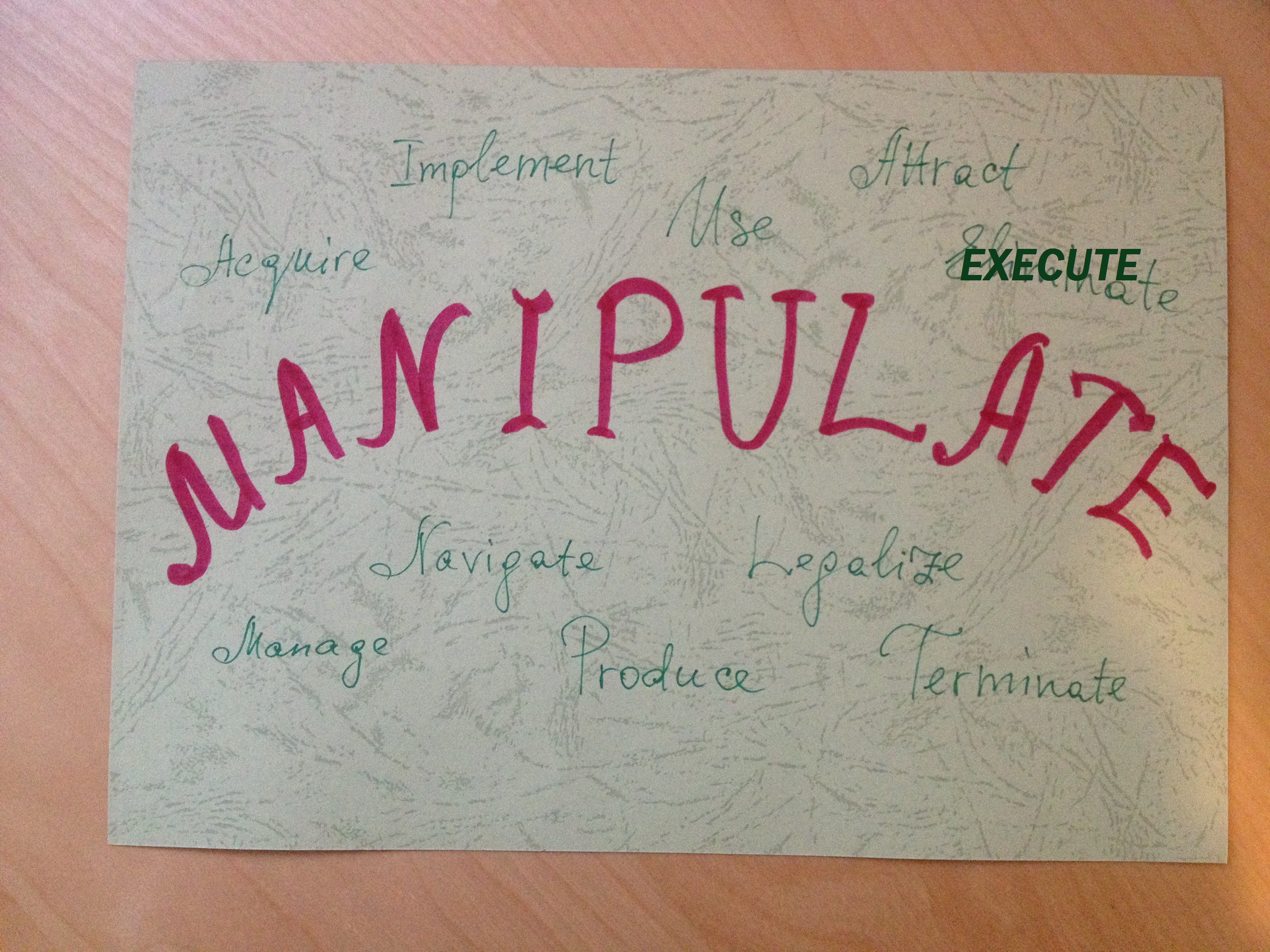
Questions to the picture: How would you compare these two pine trees? If these were two sisters, how would you compare them?
Did I attract your attention with the title of this post? Or with the caption to the picture above?
I hope so.
But in fact, I can’t quite figure a better way to briefly express what I am going to discuss today than to say, “Compare, and don’t … compare.”
But let me take it step-by-step.
Last time I shared with you how I discovered the meaning of business rules and with that I gave you a simple definition for this concept.
Disclaimer: At this point, I should emphasize that what I share in these posts is not exhaustive information on business rules. Neither is this supposed to agree or disagree with the definitions and material, which can be found, in already available text- and guidebooks on business rules. This material is based on my experience in a business and industries’ area where business rules are essential and where sometimes the smallest deviations and disagreements with them can lead to considerable delays and expenses.
Having said that, let me repeat, in similar words as last time, what I think business rules are.
Business rules are about products (and/or services). These are the decisions taken and agreed upon by the producing company and their partners, and directly or indirectly also by their customers, on how a certain product or service is created, maintained, used, discarded, etc. When respected, these rules help to guarantee high quality and longevity of the given product.
(Suggestion: for simplicity’s sake, let us embrace both concrete products and services with the word “product” or “products” .)
Today we will take a step closer to making those necessary decisions.
In order to identify what decisions need to be made, you have to consider your customer requirements and also analyse what you have available to fulfil the task.
And then you compare.
Let’s stop here a little.
I would like to bring up a paradox, which as soon as you read it, will cause your brows raising. Or at least it did, as soon as the contemplation on today’s post topic led me to this conclusion.
The comparison, you make, should be both detached and personal.
Let me explain how I came to this conclusion.
When you consider the product, for example when you suggest to replace a product the customer has with the product you offer, then the comparison should be detached.
Let’s take an example. Here are two numbers: 5 (five) and 3 (three).
How could we compare them?
One method, which we learned at school is, “If we subtract 3 from 5, we get 2. So they differ with 2. Or if we divide 5 by 3 then we get 1.666666…”
Another way to compare them, is to say, “Five is better, because it’s more.”
And this is the way you better don’t go when you look at the customer needs and what you can offer. If, of course, you want to sell your product to this customer.
But strangely enough, this kind of comparison is one of the most common. Also when the product is as large and as complex as an airplane.
I like how this detached way of considering is described in German. The word for it is “sachlich”. Here are a few of the possible translations I found for “sachlich”: businesslike, factual, and objective. The root of “sachlich” is the word “Sache” = thing, so we could say that this means looking at things for what they are, things.
But when you consider customer needs, then you need to be compassionate and interested in the personal needs of the customer. Even if the customer is a company.
You might say, “Wait a minute, but shouldn’t I also consider my own needs. I am here to earn money for my and my employees’ living, and you tell me to put my focus on the customer.”
Yes, I do think that you should put your focus on your customer. Because this will show you the way to go, which will be satisfactory for both.
I have to smile now how not too long ago I tried to convince my former managers that employees should come first before the customers. Especially when deadlines became a bit too tough. My reasoning was following the principle: Family first, then the others.
But what I neglected then and understand now, was the fact that the customer makes a part of this “family”.
Just like in a traditional family, there are here providers and consumers. In a traditional family, parents earn the money for living, and together with children they consume them.
In a commercial “family” there are two ways of provision and consumption: the customers provide for financial needs and the producers consume them. The producers provide products and services for the customers to consume.
Of course, I simplify these mechanisms here, both how they occur in a family and in business. But the main point is that when you compare the customer requirements and what you can offer, then do it as you would do it ideally in a family. Without judgment.
Let’s take the example I brought up in the caption of the picture above. If you have two daughters and ask yourself what necessary school items to buy for them, you wouldn’t say, “Eve is older than Mary, so she deserves a more expensive schoolbag than her sister.”
As a good parent, you would probably consider the age of the girls, how tall and strong they are, in order to choose the proper size. And then you will ask each of them for their color and style preferences. After considering how much money you can spend on two schoolbags, you choose a shop and buy the bags. You might also take the girls with you to perform the purchase.
The same way is the best when you talk to your customer. Personal and non-judgmental.
Let me introduce you to the top three solutions how to find out the delta between customer requirements and what you can offer right on the spot. This delta will give you a hint what will have to be done (find the bags that the girls need and like) and what requirement better to be forgotten (one thousand pink and green little dragons rimming the edge of the schoolbag) to find the common denominator between you and your customer.
Here are these top three:
3: You put yourself in your customer’s shoes and try to imagine what the customer would need and appreciate.
This is relatively simple for writers, because most of the successful writers (both in fiction and nonfiction) write what they want to read. In other cases, this might be a bit more challenging. You might have been a student many years ago, but the requirements by a student from a teacher (or from an e-learning program) are completely different today than ten, twenty or more years ago when you were a student.
But whatever the branch, this method gives a very subjective result, because it is based on your past experiences and on what you already know.
2: You research.
It can be on the Internet, from newspapers, books, or it can be through interviewing those who experienced in the same area. For example you might ask other parents with girls, what they did when they had to buy schoolbags for their children.
You might trust some sources more than other. And remember, the result is again very subjective. And still only from your, producer’s/seller’s, perspective.
1: You talk to your customer.
There is no other way to make the best decisions and set up rules applicable for both sides, than communication.
I wonder how little attention is often paid to communication. Maybe because we are afraid that the customer will say, “I don’t want to talk to you anymore, because you don’t have what I need.” Or as in example with the girls, we are afraid they will shout in our faces, “I hate you!” So, we talk and talk and talk, and claim that we know what is needed. Based on the limited means we have. And we are often afraid to look out for new possibilities.
I don’t intend to say that you have to make everything the customer wants. You would not buy a thousand dollar schoolbag for your daughter, if she wanted one, and you having three thousand dollars as your monthly salary.
But you can find the perfect solution for you and your daughter, for you and your customer, by truly listening and showing understanding for the customer needs. You even might end up with your day brightened, because you will have a nice chat with your daughter or your customer, and I am sure you will learn something new.
When I worked with German Defence (Bundeswehr) at the department responsible for consolidation of the Bundeswehr requirements in respect to technical publications, I have accompanied a lieutenant colonel from the training corps in the German Army to view a new truck, produced to be used in Afghanistan for different purposes, ranging from transportation, as a radio station, to a vehicle sheltering a small combat unit.
This seasoned soldier, but still in the best shape I have ever seen someone in his age, or in my age for that matter, took place behind the wheel of the truck.
And immediately he exclaimed. “No, no! This won’t work. No. No.”
The head of the project, at the producing company side, looked a bit concerned and asked what was the problem.
The lieutenant colonel took a few seconds to scan inside of the cabin, then jumped out of the truck and joined the rest of us at the vehicle’s side. “Well,” he said. “The ceiling is much too low. Imagine a soldier in Afghanistan driving this truck on a bumpy road. All roads there are bumpy. He’ll be hitting his head constantly on that ceiling.”
We all gushed in recognition and surprise how we hadn’t seen it ourselves.
The lieutenant colonel shrugged. “You couldn’t have known it. Because you never were in Afghanistan on a bumpy road. Or in a truck on a bumpy road.” He turned to the head of the project team and said, “And I would’ve never be able to design or build such a truck, because I have never done it before.”
The lieutenant colonel turned to the engineer taking notes. “Is there a room to make the ceiling taller.”
The answer was, “Yes”. Then a number was given, which I don’t recall today.
After that the whole thing was settled and agreed.
What I am trying to tell with these true and memorable for me stories, is that you would never be able to find out such fine details on the customer requirements if you don’t have personal communication with your customer.
There is a brilliant commercial, in which an elderly gentleman shocks his daughter when he uses the tablet, she gave him for his birthday, as a kitchen chopping board for vegetables.
So, if you would like to avoid misunderstandings, unnecessary costs, and upsets on both sides, simply do all three of the top-tree I listed above. Maybe in this order: do the necessary research, talk to your customer and put yourself in your customer’s shoes, while truly listening.
Thus, the first step in defining your business rules is to compare what the customer wants and needs, and what you have to offer, and do it without judgment of either of the sides.
Next week, we will consider various types of decisions to be taken when agreeing on the product and/or service’s details.
Call for comments: Thank you for reading and considering this information! Do you agree or disagree with the above? And why? Your opinion will help to make this topic more understandable.
This post is a part of “Business rules: General”, copyright © 2015-2016 by Victoria Ichizli-Bartels
 Last week I’ve shared with you one possible way how to define different types of business rules. This week I would like to address the management aspect of business rules.
Last week I’ve shared with you one possible way how to define different types of business rules. This week I would like to address the management aspect of business rules.



